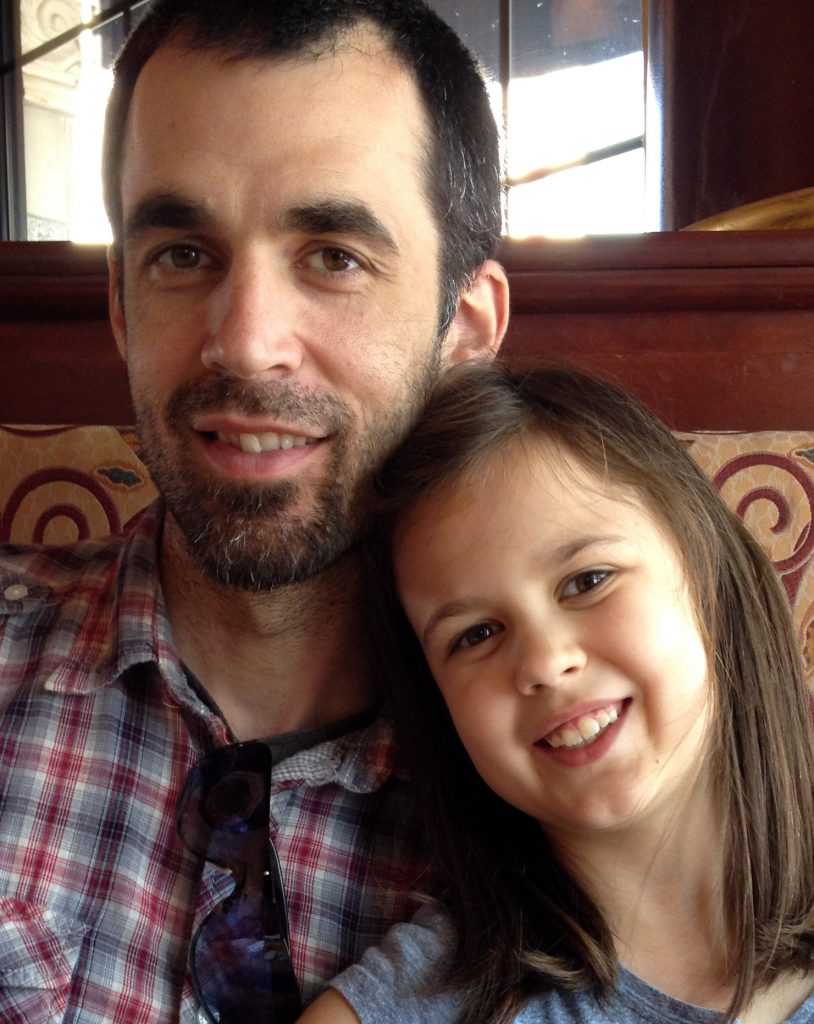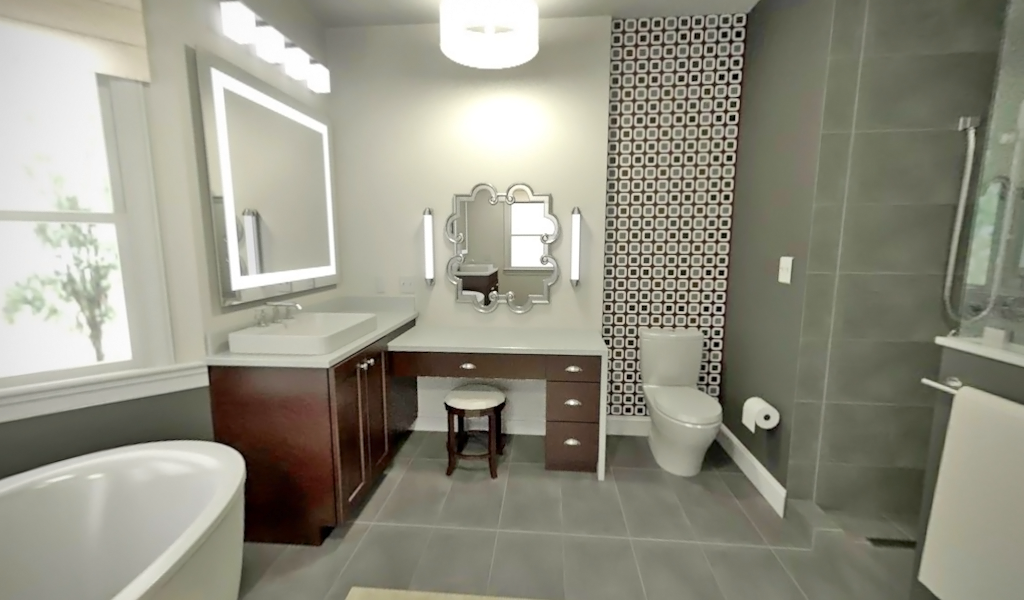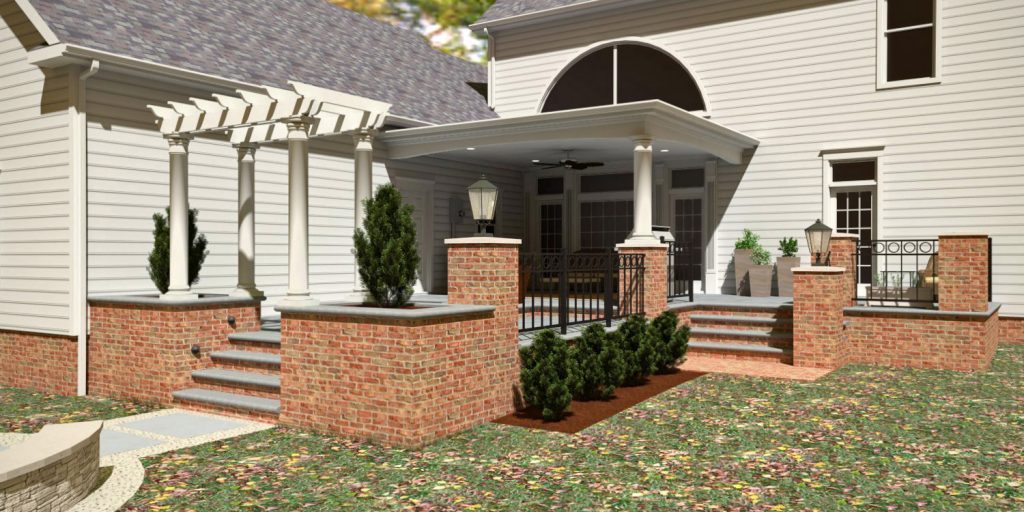We’re back today with an interview featuring another Blender professional. Jeff Mininger has a successful business in the architectural field, and you’ll learn about how he does that and what is his history with Blender. But more importantly, Jeff has found a way to balance work, family life and healthy living something most of us are striving to do.
Enjoy the interview and let us know what you think in the comments section!
Marius Iatan: Hello Jeff, could you please tell us a bit about yourself?
Jeff Mininger: I’m a dad, play bass, ride skateboards and renovate houses. In my daily work I design and draft construction plans for new homes and renovations. I began working as a carpenter about 15 yrs. ago and learned a lot about building. Enough that I didn’t want to make a career out of it. So, along the way, I took the time to learn architectural software and brought the two sets of skills together to build my own design business. I like what I do, but for me work is a support system to the life I want to live and that means spending time with my wife and two girls.
Marius: You have been in the architectural business for a long time. Has anything changed in the way you approach a new project since your first days as an architect?
Jeff: Every project presents problems that need to be solved and will force you to come up with a creative solution. Over the years, the solutions I developed have become a resource I can go back to and adapt to new projects. I have always tried to deliver style that fits the house and the personality of the client. In the end, I am repackaging what the clients are asking for and giving it back to them.
Marius: What are your favorite learning resources dedicated to architecture?
Jeff: We have a lot of historic districts near where we live. I love looking at the old buildings and puzzling at the construction methods they used. It amazes me the detail they would put into a structure and the primitive tools they did it with. The idea of building something to last a 100 yrs. or more is unfortunately not something people even consider anymore. For contemporary work, I use Houzz occasionally for inspiration pictures and watch some of the renovation shows on TV. They give you a good idea of where the trends are.

Marius: When did you start doing architectural rendering, and what made you do it?
Jeff: The software I began using originally was both 2D and 3D. I loved what it offered me and my clients, but I thought the rendering engine was slow and produced low quality images. So I was always looking for something better. I stumbled upon Blender around 2009 and began trying to get an efficient workflow from the architectural software, to Blender. I tried different things and put in a lot of hours over several years until I finally got a breakthrough. And though I still have areas I am trying to iron out, it is now quicker to export my models, clean up a few things, texture and add lighting in Blender than wait for the architectural software to finish up a few so-so renders. RenderStreet has been a big part of the solution for me. Before, I could never justify the render times and the strain they put on my computer.
Marius: Are 3D visualization renderings influencing the decision process of your customers?
Jeff: Almost everyone you ask will tell you that they can not visualize a finished project when they look at construction plans. Since incorporating 3D work in the design process, I have seen a dramatic drop in changes that happen after a project begins. This has value to the contractors and clients because it can save a significant amount of time and money. 3D work is very much in demand right now. Most clients have seen enough of HGTV to almost expect it, but not very many contractors and architects are able to provide the service.


Marius: What is your history with Blender? How did it influence your professional path?
Jeff: Since finding Blender in 2009, I have always been amazed at its ability to produce great renders. I follow the content Andrew Price creates and aspire to the level of work he brings. For me, I am always having to balance quality and speed. As much as I can learn about Blender’s capabilities and adapt them into my workflow, I do. The most significant influence came with Cycles equirectangular rendering. That allows me to give my clients a 360° panoramic view of their design that they can view on their computer or smartphone. You can find a couple of renders illustrating the technique here and here.
Marius: What was the most challenging project you created?
Jeff: I have done a number of large projects – like a 24 car garage, an entire new subdivision, and some churches. They are only challenging in the sense that they take a lot of time though. Anytime someone asks for a 4 piece bath, with a separate room for the toilet, I cringe. They are the worst. There is never enough space for all that. Another tough thing I encounter are renovations that open up between two floors of a house. You really have to pay attention to supporting the structure while delivering the design. Retro-fitting staircases can be tough, too.
Marius: The recent remake of The Great Gatsby makes extensive use of 3D effects both for the interiors and the outer scenery. Do you think this is the beginning of a trend? Will it require a new breed of architects?
Jeff: It will definitely be the future. The fact that it is used as much as it is now indicates the cost of CG is less than set building or shooting on location. Probably more important though is the ability to come back later and change things about a scene. That is really valuable. I don’t know how much overlap there is between film and the building communities, but if someone positioned themselves there, I think they would find lots of opportunities.

Marius: You are also very active in the health and wellness area. Is there a competition between architecture and sports? Does any of them take the first place in your life?
Jeff: My wife and I were looking for a secondary income she could earn from home after having our 2nd child. At that time a good friend of ours encouraged us to check out a nutritional company called Advocare. I fell in love with their products for healthy energy and she used them to lose 2 dress sizes. It stirred up in us our passion for healthy living and helping others do the same thing. We now teach, coach and mentor people looking for healthy energy, weight-loss and building a home-based business. Design, drafting, rendering equals a lot of sitting, so it’s a good balance.
Marius: What is your advice for young artists deciding to specialize in 3D architecture?
Jeff: This is a field in which you can make a good income, but most likely you will need to work as self-employed, a freelancer, or sub-contractor. There are not very many hirable positions for this type of work. It takes time to build a clientele, and you will only be able to increase your rate as you increase your value and client base. Like it or not, to be successful you have to be as good at networking as your are an artist. To get connected, I would recommend finding construction businesses that describe themselves as “design/build” and architects that have not begun using 3D software. Most business networking groups are made up of contractors, realtors, bankers and services that surround the building industry. These people can also help point you in the right direction in finding work.
Marius: What are your future plans?
Jeff: I would like to develop the design business into a more duplicable system, to either add additional designers, or automate the process further. My original goal was for my wife and I to be work from home parents. Now the goal is to free up more time to live life together and give back to the community.

All images featured in this article are 3D visualizations made with Blender , and created by Jeff Mininger.







